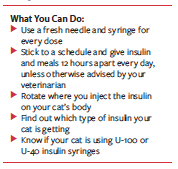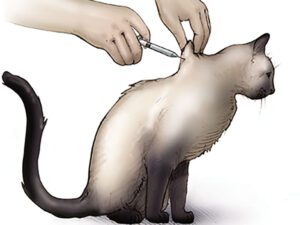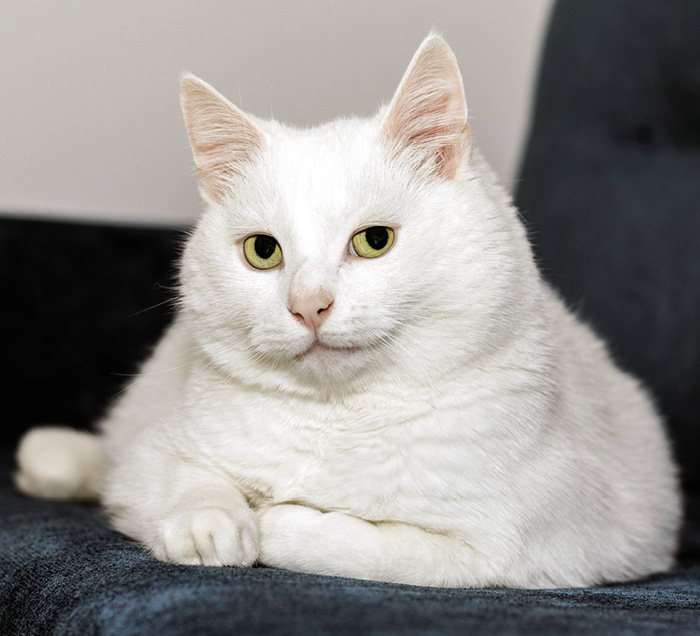Receiving a diabetes diagnosis for your cat is stressful, but this disease can often be managed successfully for a long time. And if you or a family member have diabetes, you may recognize your cat’s medication.
Types of Insulin
“We do, in fact, use mostly human insulins to manage our diabetic cats,” says Leni K. Kaplan, MS, DVM, senior lecturer at Cornell University’s College of Veterinary Medicine. There are four types of insulin commonly used for cats: Vetsulin, PZI insulin, Lantus (Glargine), and Humulin N (Humulin R can also be used for cats but is very short acting, so it is generally only used for emergencies within the veterinary hospital).
All these medications are usually available in human pharmacies or from your veterinarian.
Traditionally, insulin comes in a small bottle or vial and needs to be drawn up with a syringe for each dose. Vetsulin and Lantus are both also available in an injection pen, which will administer the correct dose with the click of a button.
Different types of insulin are not interchangeable. If your veterinarian has prescribed a particular insulin for your cat, stick with it, even if there are other types of insulin available in your household. Consistency and attention to detail will help your cat achieve a normal and stable blood glucose level.
Insulin Syringes
Not all insulin syringes are created equal.
“The most important thing to know is that there are different types of syringes for different types of insulin, so not all insulin syringes are the same and not all can be used for all types of insulin,” says Dr. Kaplan.
types of insulin, so not all insulin syringes are the same and not all can be used for all types of insulin,” says Dr. Kaplan.
Insulin syringes are tiny compared to other syringes that you may have seen and measure in units rather than milliliters (ml) or cubic centimeters (cc). As if that isn’t confusing enough, insulin syringes are also divided into U-100 and U-40. U-100 means that the syringe breaks 1ml into 100 units, whereas U-40 breaks 1ml into 40 units (so one unit from a U-40 syringe is a lot more insulin than one unit from a U-100 syringe).
Your veterinarian will help you navigate these details when he or she shows you how to inject the medication into your cat. “The pet’s veterinarian can write a prescription for the insulin syringes, and they can be purchased either at a local or reputable online pharmacy,” says Dr. Kaplan. “Since many cats need tiny doses of insulin, owners should request a “low dose” insulin syringe—such as 0.3 mls or 0.5 mls—so it is easier and more accurate dosing when drawing insulin out of the bottle.”
If you have an insulin pen for your cat, you won’t need to worry about syringes. You will still need to put a fresh needle on the pen for each injection. The needles used for insulin are extremely tiny, and most cats barely feel the injections. You can sweeten the deal by offering an approved treat.
Common Concerns
“It is crucial that owners communicate their specific concerns with their veterinarian,” says

To administer an injection, pull the loose skin between the shoulder blades with one hand. With the other hand, insert the needle directly into the indentation made by holding up the skin, draw back on the plunger slightly, and if no blood appears in the syringe, inject gently.
Dr. Kaplan. The most common concerns that she has experienced are time commitment and lifestyle adjustment due to the necessity of giving insulin injections every 12 hours consistently, financial concerns, fear of giving injections, and diet changes. “Many owners are very devoted to their pets’ current diets!” she says.
If you have questions about your diabetic cat, talk to your veterinarian. This is a marathon, not a sprint. Work with your veterinarian to make diabetes management a seamless part of your life.ν




